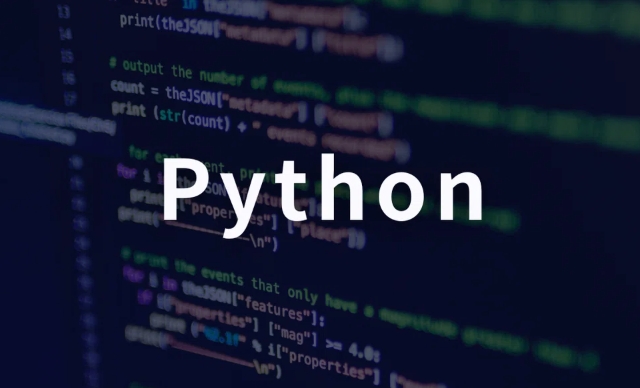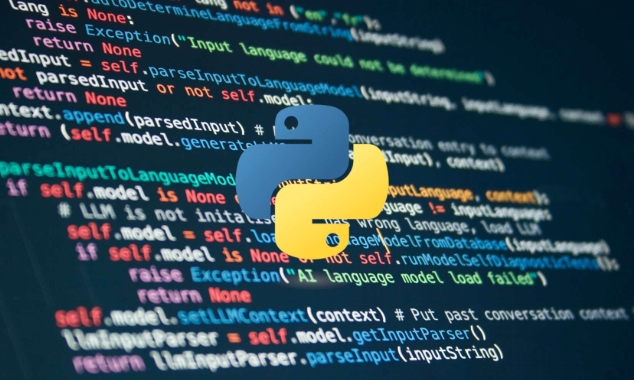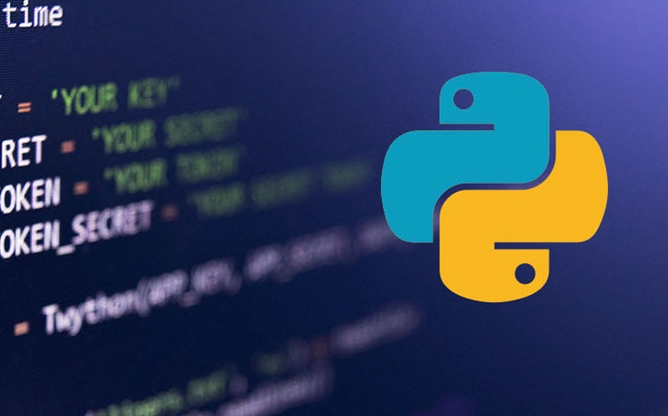super() in Python is used to call methods from parent classes, particularly useful in multiple inheritance. 1. It avoids hard-coding parent class names, improving code flexibility. 2. super() follows the method resolution order (MRO) to determine which parent method to call. 3. In multiple inheritance, using super() ensures each class’s init is called once in MRO-defined order. 4. It's best practice to use super() unless intentionally overriding or debugging. 5. While optional in simple cases, using super() keeps code maintainable and DRY.

Using super() in Python might seem a bit confusing at first, especially if you're new to object-oriented programming or multiple inheritance. But once you understand what it does and why it's useful, it becomes a powerful tool for managing inheritance cleanly.

At its core, super() is used to call a method from a parent class — usually __init__, but not always. It helps avoid hard-coding the parent class name, making your code more maintainable and flexible, especially in complex inheritance hierarchies.
What super() Actually Does
When you use super() inside a class method, like __init__, it gives you access to the parent class’s methods without explicitly naming that parent class. This is particularly helpful when you don’t know or want to tightly couple your child class to a specific parent.

For example:
class Parent:
def __init__(self):
print("Parent initialized")
class Child(Parent):
def __init__(self):
super().__init__()
print("Child initialized")Calling Child() will first run Parent.__init__ via super(), then the extra print in Child. This way, you’re ensuring that all initialization steps are respected without repeating yourself.

This also works with deeper inheritance chains. In fact, super() follows the method resolution order (MRO), which determines how classes are searched when looking for a method.
Using super() in Multiple Inheritance
Multiple inheritance can get messy fast — imagine two parent classes both defining __init__. Without super(), you’d have to manually manage which one gets called and in what order.
With super(), as long as each class uses it properly, everything lines up according to MRO.
Here’s a basic example:
class A:
def __init__(self):
print("A init")
super().__init__()
class B:
def __init__(self):
print("B init")
super().__init__()
class C(A, B):
def __init__(self):
print("C init")
super().__init__()If you create an instance of C, you’ll see output in this order:
C init A init B init
That’s because Python calculates the MRO based on the inheritance list (C(A, B)), and super() makes sure each __init__ is called once in that order.
The key takeaway here:
- Always use
super()in__init__and other overridden methods - Don’t assume which class comes next — trust the MRO
- Avoid calling parent methods directly by name unless absolutely necessary
When Not to Use super()
While super() is great for most cases, there are times when you might want to skip it:
- If you intentionally want to override a method without running the parent version
- If you need to call a specific parent method regardless of MRO (like when debugging or patching)
- In simple single-inheritance cases where using
super()adds no real benefit
In these cases, you could just do something like:
Parent.__init__(self)
But again, this is less flexible and harder to maintain in larger systems.
Final Notes
You don't have to use super() every time you write a subclass, but it’s definitely worth understanding. It keeps your code DRY, supports multiple inheritance more gracefully, and avoids brittle dependencies between classes.
If you're working with frameworks or libraries that expect certain initialization patterns (like Django or Flask extensions), they often rely on super() being used correctly.
So while it might feel optional in small scripts, it’s a solid habit to adopt early.
Basically, that's what you need to know about super() — not magic, just smart design.
The above is the detailed content of Python super() explained. For more information, please follow other related articles on the PHP Chinese website!

Hot AI Tools

Undress AI Tool
Undress images for free

Undresser.AI Undress
AI-powered app for creating realistic nude photos

AI Clothes Remover
Online AI tool for removing clothes from photos.

Clothoff.io
AI clothes remover

Video Face Swap
Swap faces in any video effortlessly with our completely free AI face swap tool!

Hot Article

Hot Tools

Notepad++7.3.1
Easy-to-use and free code editor

SublimeText3 Chinese version
Chinese version, very easy to use

Zend Studio 13.0.1
Powerful PHP integrated development environment

Dreamweaver CS6
Visual web development tools

SublimeText3 Mac version
God-level code editing software (SublimeText3)

Hot Topics
 How to iterate over two lists at once Python
Jul 09, 2025 am 01:13 AM
How to iterate over two lists at once Python
Jul 09, 2025 am 01:13 AM
A common method to traverse two lists simultaneously in Python is to use the zip() function, which will pair multiple lists in order and be the shortest; if the list length is inconsistent, you can use itertools.zip_longest() to be the longest and fill in the missing values; combined with enumerate(), you can get the index at the same time. 1.zip() is concise and practical, suitable for paired data iteration; 2.zip_longest() can fill in the default value when dealing with inconsistent lengths; 3.enumerate(zip()) can obtain indexes during traversal, meeting the needs of a variety of complex scenarios.
 What are python iterators?
Jul 08, 2025 am 02:56 AM
What are python iterators?
Jul 08, 2025 am 02:56 AM
InPython,iteratorsareobjectsthatallowloopingthroughcollectionsbyimplementing__iter__()and__next__().1)Iteratorsworkviatheiteratorprotocol,using__iter__()toreturntheiteratorand__next__()toretrievethenextitemuntilStopIterationisraised.2)Aniterable(like
 What is descriptor in python
Jul 09, 2025 am 02:17 AM
What is descriptor in python
Jul 09, 2025 am 02:17 AM
The descriptor protocol is a mechanism used in Python to control attribute access behavior. Its core answer lies in implementing one or more of the __get__(), __set__() and __delete__() methods. 1.__get__(self,instance,owner) is used to obtain attribute value; 2.__set__(self,instance,value) is used to set attribute value; 3.__delete__(self,instance) is used to delete attribute value. The actual uses of descriptors include data verification, delayed calculation of properties, property access logging, and implementation of functions such as property and classmethod. Descriptor and pr
 How to call Python from C ?
Jul 08, 2025 am 12:40 AM
How to call Python from C ?
Jul 08, 2025 am 12:40 AM
To call Python code in C, you must first initialize the interpreter, and then you can achieve interaction by executing strings, files, or calling specific functions. 1. Initialize the interpreter with Py_Initialize() and close it with Py_Finalize(); 2. Execute string code or PyRun_SimpleFile with PyRun_SimpleFile; 3. Import modules through PyImport_ImportModule, get the function through PyObject_GetAttrString, construct parameters of Py_BuildValue, call the function and process return
 What is a forward reference in Python type hints for classes?
Jul 09, 2025 am 01:46 AM
What is a forward reference in Python type hints for classes?
Jul 09, 2025 am 01:46 AM
ForwardreferencesinPythonallowreferencingclassesthatarenotyetdefinedbyusingquotedtypenames.TheysolvetheissueofmutualclassreferenceslikeUserandProfilewhereoneclassisnotyetdefinedwhenreferenced.Byenclosingtheclassnameinquotes(e.g.,'Profile'),Pythondela
 Parsing XML data in Python
Jul 09, 2025 am 02:28 AM
Parsing XML data in Python
Jul 09, 2025 am 02:28 AM
Processing XML data is common and flexible in Python. The main methods are as follows: 1. Use xml.etree.ElementTree to quickly parse simple XML, suitable for data with clear structure and low hierarchy; 2. When encountering a namespace, you need to manually add prefixes, such as using a namespace dictionary for matching; 3. For complex XML, it is recommended to use a third-party library lxml with stronger functions, which supports advanced features such as XPath2.0, and can be installed and imported through pip. Selecting the right tool is the key. Built-in modules are available for small projects, and lxml is used for complex scenarios to improve efficiency.
 how to avoid long if else chains in python
Jul 09, 2025 am 01:03 AM
how to avoid long if else chains in python
Jul 09, 2025 am 01:03 AM
When multiple conditional judgments are encountered, the if-elif-else chain can be simplified through dictionary mapping, match-case syntax, policy mode, early return, etc. 1. Use dictionaries to map conditions to corresponding operations to improve scalability; 2. Python 3.10 can use match-case structure to enhance readability; 3. Complex logic can be abstracted into policy patterns or function mappings, separating the main logic and branch processing; 4. Reducing nesting levels by returning in advance, making the code more concise and clear. These methods effectively improve code maintenance and flexibility.
 Implementing multi-threading in Python
Jul 09, 2025 am 01:11 AM
Implementing multi-threading in Python
Jul 09, 2025 am 01:11 AM
Python multithreading is suitable for I/O-intensive tasks. 1. It is suitable for scenarios such as network requests, file reading and writing, user input waiting, etc., such as multi-threaded crawlers can save request waiting time; 2. It is not suitable for computing-intensive tasks such as image processing and mathematical operations, and cannot operate in parallel due to global interpreter lock (GIL). Implementation method: You can create and start threads through the threading module, and use join() to ensure that the main thread waits for the child thread to complete, and use Lock to avoid data conflicts, but it is not recommended to enable too many threads to avoid affecting performance. In addition, the ThreadPoolExecutor of the concurrent.futures module provides a simpler usage, supports automatic management of thread pools and asynchronous acquisition






